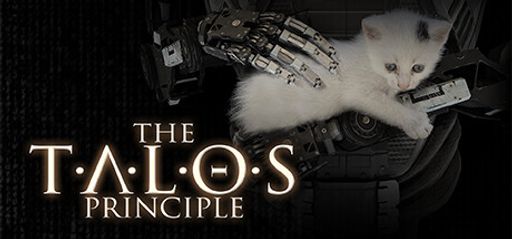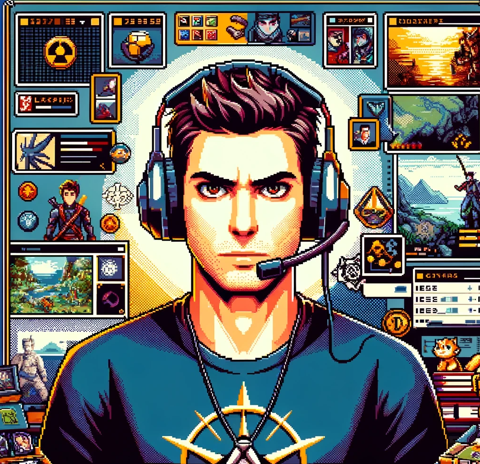 I loved The Talos Principle. Croteam developed it with care, and Devolver Digital published it. From the start, Steam reviews were glowing—many called it a hidden gem. It includes 120+ puzzles. Although a few slow pacing, the experience remains strong. Fans especially praise the rich lore and immersive world-building. I unlocked all sigils, secrets, and achievements—exactly the kind of game I adore. Previously, Croteam made the chaotic Serious Sam series. Therefore, this philosophical shift feels bold, deliberate, and impressively executed.
I loved The Talos Principle. Croteam developed it with care, and Devolver Digital published it. From the start, Steam reviews were glowing—many called it a hidden gem. It includes 120+ puzzles. Although a few slow pacing, the experience remains strong. Fans especially praise the rich lore and immersive world-building. I unlocked all sigils, secrets, and achievements—exactly the kind of game I adore. Previously, Croteam made the chaotic Serious Sam series. Therefore, this philosophical shift feels bold, deliberate, and impressively executed.
 I jumped in as soon as I learned about The Talos Principle’s open exploration format. Immediately, it felt like a quiet, peaceful sandbox filled with ruins. Each zone features themed puzzles nestled within aged architecture. Meanwhile, secret star fragments unlock bonus challenges. Visually, it blends ancient myth with sleek minimalism. It reminded me of Breath of the Wild—open, not forced. Back in 2014, Croteam released a free demo. That early preview demonstrated their clever design philosophy and confirmed this was a thoughtful, exploration-driven game for puzzle lovers like me.
I jumped in as soon as I learned about The Talos Principle’s open exploration format. Immediately, it felt like a quiet, peaceful sandbox filled with ruins. Each zone features themed puzzles nestled within aged architecture. Meanwhile, secret star fragments unlock bonus challenges. Visually, it blends ancient myth with sleek minimalism. It reminded me of Breath of the Wild—open, not forced. Back in 2014, Croteam released a free demo. That early preview demonstrated their clever design philosophy and confirmed this was a thoughtful, exploration-driven game for puzzle lovers like me.
 Steam reviews often call it a masterpiece. Players consistently praise the visuals, philosophical depth, and clever mechanics. Bugs are rarely mentioned. A few note frame drops on older consoles, but overall, performance stays solid. As a result, its polish really stands out. Personally, I’m drawn to puzzle games that feel precise and intentional. This one respects your intelligence. Every element—from structure to story—feels focused and well-crafted. There’s no fluff or filler. Instead, it’s a rewarding experience built for players who love a deep challenge.
Steam reviews often call it a masterpiece. Players consistently praise the visuals, philosophical depth, and clever mechanics. Bugs are rarely mentioned. A few note frame drops on older consoles, but overall, performance stays solid. As a result, its polish really stands out. Personally, I’m drawn to puzzle games that feel precise and intentional. This one respects your intelligence. Every element—from structure to story—feels focused and well-crafted. There’s no fluff or filler. Instead, it’s a rewarding experience built for players who love a deep challenge.
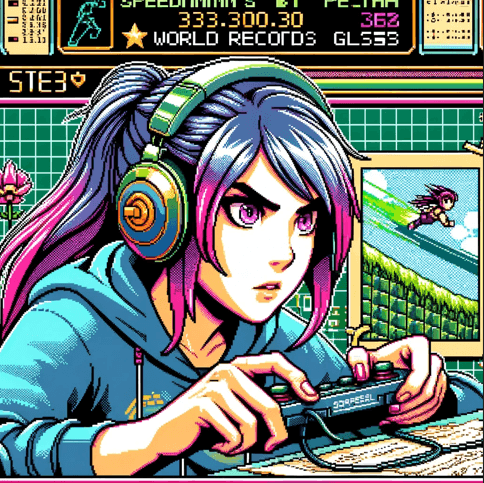 I saw streamers rave about its smart puzzle layouts. They shared optimal paths, debated strategies, and stayed engaged for hours. That level of enthusiasm helped earn the “Overwhelmingly Positive” Steam tag. Watching those streams taught me new tricks and deepened my appreciation. In general, puzzle games rarely generate ongoing buzz, but this one created sustained excitement. The strong community energy drew me back repeatedly. Ultimately, the continued conversation around systems and solutions shows how well the game’s design resonates with curious, challenge-driven players.
I saw streamers rave about its smart puzzle layouts. They shared optimal paths, debated strategies, and stayed engaged for hours. That level of enthusiasm helped earn the “Overwhelmingly Positive” Steam tag. Watching those streams taught me new tricks and deepened my appreciation. In general, puzzle games rarely generate ongoing buzz, but this one created sustained excitement. The strong community energy drew me back repeatedly. Ultimately, the continued conversation around systems and solutions shows how well the game’s design resonates with curious, challenge-driven players.
 When it comes to gameplay in The Talos Principle, the toolset is a highlight. From the beginning, you’re introduced to jammers, connectors, cubes, and time-clone recordings. Each tool adds unique depth. In particular, laser beams feel precise and rewarding. As puzzles grow in complexity, they stay fair and logical. It reminded me of Portal meets The Witness. Additionally, the non-linear layout enhances replayability. Most importantly, the tools never feel gimmicky—they’re central to the experience. This thoughtful design invites experimentation and strategy. That balance kept me fully immersed and engaged.
When it comes to gameplay in The Talos Principle, the toolset is a highlight. From the beginning, you’re introduced to jammers, connectors, cubes, and time-clone recordings. Each tool adds unique depth. In particular, laser beams feel precise and rewarding. As puzzles grow in complexity, they stay fair and logical. It reminded me of Portal meets The Witness. Additionally, the non-linear layout enhances replayability. Most importantly, the tools never feel gimmicky—they’re central to the experience. This thoughtful design invites experimentation and strategy. That balance kept me fully immersed and engaged.
 The laser connector and cube system are my favorite tools. They demand precision and layered problem-solving. I spent hours experimenting and even created guides to help fellow players. Fortunately, Serious Engine 4 handles physics beautifully—no stutters, even with complex setups. That technical smoothness matters. It lets me focus entirely on solving without distractions. There’s a unique satisfaction in aligning lasers perfectly or stacking cubes just right. Most importantly, these tools remain flexible and intuitive. I never felt boxed in—only limited by my own logic and creativity.
The laser connector and cube system are my favorite tools. They demand precision and layered problem-solving. I spent hours experimenting and even created guides to help fellow players. Fortunately, Serious Engine 4 handles physics beautifully—no stutters, even with complex setups. That technical smoothness matters. It lets me focus entirely on solving without distractions. There’s a unique satisfaction in aligning lasers perfectly or stacking cubes just right. Most importantly, these tools remain flexible and intuitive. I never felt boxed in—only limited by my own logic and creativity.
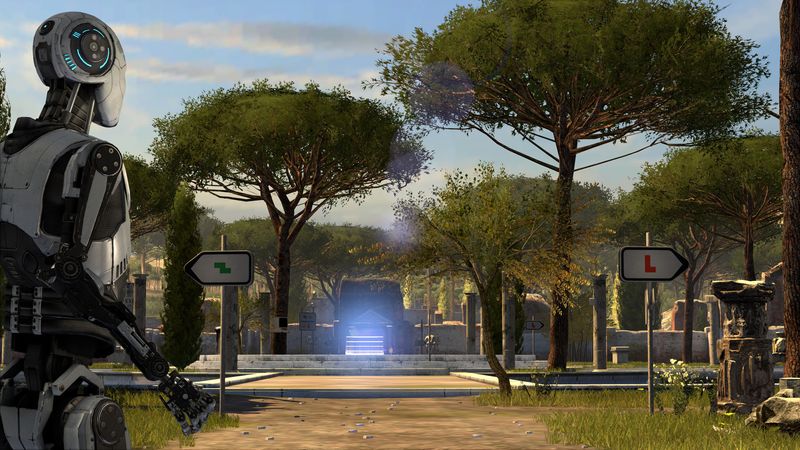
 For speedruns, I skip minor puzzles using glitch jumps and boost techniques. To save time, I rely on fast cube swaps and fence hops that shave off precious seconds. Additionally, I analyzed frame data to track drone paths and optimize movement. Fortunately, the PC version runs at a stable 60 fps, which is crucial. After all, timing every trick perfectly makes a difference. This technical consistency supports deeper routing and tighter execution. As a result, speedrunning here feels like solving puzzles within puzzles—a layered, fast-paced challenge that’s both complex and endlessly satisfying.
For speedruns, I skip minor puzzles using glitch jumps and boost techniques. To save time, I rely on fast cube swaps and fence hops that shave off precious seconds. Additionally, I analyzed frame data to track drone paths and optimize movement. Fortunately, the PC version runs at a stable 60 fps, which is crucial. After all, timing every trick perfectly makes a difference. This technical consistency supports deeper routing and tighter execution. As a result, speedrunning here feels like solving puzzles within puzzles—a layered, fast-paced challenge that’s both complex and endlessly satisfying.
 Now the story—this game has one of the most introspective narratives in gaming. It immediately asks existential questions: Who are you? Why do you exist? Tom Jubert’s writing adds emotional nuance, while Elohim’s mysterious voice gives everything a spiritual weight. Furthermore, terminal logs offer layered meaning throughout. I even took notes on philosophical clues. Co-writer Jonas Kyratzes blends myth and sci-fi with precision. Together, they craft a world that makes you feel small yet significant. The story unfolds slowly but deliberately. Each log, each choice, adds to a larger, lasting message that resonates beyond gameplay.
Now the story—this game has one of the most introspective narratives in gaming. It immediately asks existential questions: Who are you? Why do you exist? Tom Jubert’s writing adds emotional nuance, while Elohim’s mysterious voice gives everything a spiritual weight. Furthermore, terminal logs offer layered meaning throughout. I even took notes on philosophical clues. Co-writer Jonas Kyratzes blends myth and sci-fi with precision. Together, they craft a world that makes you feel small yet significant. The story unfolds slowly but deliberately. Each log, each choice, adds to a larger, lasting message that resonates beyond gameplay.
 I loved discovering audio logs hidden throughout temples and grassy fields. Often, I found codes beneath platforms, behind statues, or sealed in locked doors. Each log added a puzzle piece to the fragmented lore. Because the story is non-linear, it felt like assembling a mental mystery. Every discovery felt deeply personal—like I’d earned it. Rather than spoon-feed answers, the game trusts your curiosity. In turn, that respect keeps you engaged. These scattered fragments add mystery and depth—one hidden log at a time. It’s an atmospheric and genuinely rewarding form of narrative discovery.
I loved discovering audio logs hidden throughout temples and grassy fields. Often, I found codes beneath platforms, behind statues, or sealed in locked doors. Each log added a puzzle piece to the fragmented lore. Because the story is non-linear, it felt like assembling a mental mystery. Every discovery felt deeply personal—like I’d earned it. Rather than spoon-feed answers, the game trusts your curiosity. In turn, that respect keeps you engaged. These scattered fragments add mystery and depth—one hidden log at a time. It’s an atmospheric and genuinely rewarding form of narrative discovery.
 The story complements the puzzles perfectly. As you progress, the narrative builds in both mystery and emotional depth, ending with truly powerful choices. Each twist feels earned—not just placed. More importantly, the story blends seamlessly with the puzzles, giving players meaningful agency. I watched GDC talks where the developers explained how they synced the logic with narrative—they absolutely nailed it. Nothing feels tacked on or forced. You’re solving challenges while shaping meaning. The final sequence pulls every thread together, creating a rare and cohesive journey in puzzle game storytelling.
The story complements the puzzles perfectly. As you progress, the narrative builds in both mystery and emotional depth, ending with truly powerful choices. Each twist feels earned—not just placed. More importantly, the story blends seamlessly with the puzzles, giving players meaningful agency. I watched GDC talks where the developers explained how they synced the logic with narrative—they absolutely nailed it. Nothing feels tacked on or forced. You’re solving challenges while shaping meaning. The final sequence pulls every thread together, creating a rare and cohesive journey in puzzle game storytelling.
 I skip some dialogue in speedruns to stay efficient. Still, I keep certain logs active—especially those involving Elohim or system anomalies. These help track milestones without slowing pace. Terminals show star counts and clears, which are vital for fast routing. Skipping fluff cuts time, but key logs preserve context. It’s a balance: optimize without losing structure. Even while racing, the story keeps me grounded. It reminds me what the game is about. Speed and meaning don’t have to be opposites here.
I skip some dialogue in speedruns to stay efficient. Still, I keep certain logs active—especially those involving Elohim or system anomalies. These help track milestones without slowing pace. Terminals show star counts and clears, which are vital for fast routing. Skipping fluff cuts time, but key logs preserve context. It’s a balance: optimize without losing structure. Even while racing, the story keeps me grounded. It reminds me what the game is about. Speed and meaning don’t have to be opposites here.
 Visually, the game is stunning. Serious Engine 4 blends Greek ruins with digital elements. Mossy walls, glowing temples, and painterly skies fill the world. I took screenshots to study light and shadow. Golden hour warmth contrasts with cool, deep shadows. The art direction is meticulous. It rewards casual players and eagle-eyed explorers alike. This clarity helps spot secrets and puzzle clues. The visuals do more than look good—they support gameplay, building immersion and enhancing the problem-solving experience throughout.
Visually, the game is stunning. Serious Engine 4 blends Greek ruins with digital elements. Mossy walls, glowing temples, and painterly skies fill the world. I took screenshots to study light and shadow. Golden hour warmth contrasts with cool, deep shadows. The art direction is meticulous. It rewards casual players and eagle-eyed explorers alike. This clarity helps spot secrets and puzzle clues. The visuals do more than look good—they support gameplay, building immersion and enhancing the problem-solving experience throughout.
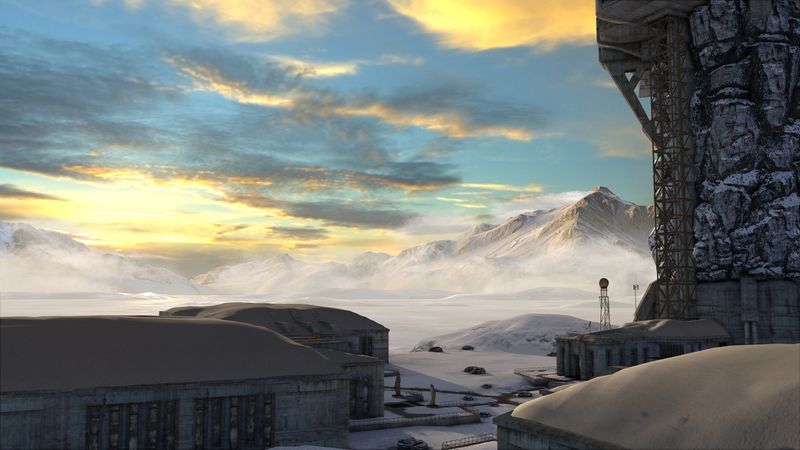
 I admired the skybox and cloud animations. They breathe life into still ruins. I climbed towers just to glimpse distant temples. It reminded me of Rime or Abzû—peaceful, mysterious, reflective. The sky isn’t just pretty—it guides you. Horizon lines hint at future zones or secrets. These details enhance immersion. Subtle navigation cues are woven into scenery. It’s visual storytelling at its best. Rather than overwhelm with icons or HUD clutter, the game uses beauty and atmosphere to direct your path.
I admired the skybox and cloud animations. They breathe life into still ruins. I climbed towers just to glimpse distant temples. It reminded me of Rime or Abzû—peaceful, mysterious, reflective. The sky isn’t just pretty—it guides you. Horizon lines hint at future zones or secrets. These details enhance immersion. Subtle navigation cues are woven into scenery. It’s visual storytelling at its best. Rather than overwhelm with icons or HUD clutter, the game uses beauty and atmosphere to direct your path.
 I tested The Talos Principle on both PC and Mac. Across both platforms, it maintained a solid 60 fps—even in large hub zones. Notably, mid-range GPUs like the GTX 1060 handled it with ease. As a result, the performance really impressed me. It scaled smoothly across hardware without introducing bugs or delays. For a game this intricate, that’s essential. Moreover, transitions between zones were seamless, and load times brief. Whether I was solving intricate chains or speedrunning, the engine’s consistency kept everything feeling natural.
I tested The Talos Principle on both PC and Mac. Across both platforms, it maintained a solid 60 fps—even in large hub zones. Notably, mid-range GPUs like the GTX 1060 handled it with ease. As a result, the performance really impressed me. It scaled smoothly across hardware without introducing bugs or delays. For a game this intricate, that’s essential. Moreover, transitions between zones were seamless, and load times brief. Whether I was solving intricate chains or speedrunning, the engine’s consistency kept everything feeling natural.
 I always turn off motion blur. For one thing, it helps me focus on terrain and item placement. Especially during speedruns, clear visuals matter. Removing blur sharpens geometry and reveals hidden details. For example, in tight corridors or vertical puzzles, every pixel counts. With blur off, I catch platform edges, laser angles, and terrain seams more easily. It’s a small tweak, but the benefits are huge. Ultimately, for players aiming to optimize movement or solve secrets, visual clarity is essential.
I always turn off motion blur. For one thing, it helps me focus on terrain and item placement. Especially during speedruns, clear visuals matter. Removing blur sharpens geometry and reveals hidden details. For example, in tight corridors or vertical puzzles, every pixel counts. With blur off, I catch platform edges, laser angles, and terrain seams more easily. It’s a small tweak, but the benefits are huge. Ultimately, for players aiming to optimize movement or solve secrets, visual clarity is essential.
 I listened closely to every audio cue. Throughout the game, music swells gently when puzzles are solved. Composer Damjan Mravunac—also known for Serious Sam—crafted a score that feels ambient yet emotional. In addition, sound effects like jammers and pressure plates add satisfying tactile feedback. Each action sounds grounded. For instance, solving a puzzle often triggers a rewarding chime. That audio cue reinforces progress. More importantly, the balance between music and effects enhances immersion. It keeps players focused without ever becoming overwhelming.
I listened closely to every audio cue. Throughout the game, music swells gently when puzzles are solved. Composer Damjan Mravunac—also known for Serious Sam—crafted a score that feels ambient yet emotional. In addition, sound effects like jammers and pressure plates add satisfying tactile feedback. Each action sounds grounded. For instance, solving a puzzle often triggers a rewarding chime. That audio cue reinforces progress. More importantly, the balance between music and effects enhances immersion. It keeps players focused without ever becoming overwhelming.
 Some sounds in The Talos Principle stood out. For example, distant chimes hinted at hidden towers or puzzles. Meanwhile, drone hums created tension, signaling danger or surveillance. These layered effects made exploration feel mysterious and alive. Often, I’d stop just to trace a sound, which frequently led to secrets. Altogether, it felt like wandering through a living myth. The sound design wasn’t just immersive—it was functional. In other words, every audio detail pulled me deeper into the world while guiding gameplay.
Some sounds in The Talos Principle stood out. For example, distant chimes hinted at hidden towers or puzzles. Meanwhile, drone hums created tension, signaling danger or surveillance. These layered effects made exploration feel mysterious and alive. Often, I’d stop just to trace a sound, which frequently led to secrets. Altogether, it felt like wandering through a living myth. The sound design wasn’t just immersive—it was functional. In other words, every audio detail pulled me deeper into the world while guiding gameplay.
 I heard distant chimes. They drew me into unexplored zones and hidden towers. Additionally, drone hums either warned me of threats or hinted at nearby puzzles. This subtle sound design made exploration feel dynamic. I often paused mid-sprint to follow a sound, trusting it would reveal something important. As a result, the world felt alive with secrets. Each new chime reignited curiosity. That constant, audio-driven sense of discovery added both suspense and excitement—even deep into my playthrough.
I heard distant chimes. They drew me into unexplored zones and hidden towers. Additionally, drone hums either warned me of threats or hinted at nearby puzzles. This subtle sound design made exploration feel dynamic. I often paused mid-sprint to follow a sound, trusting it would reveal something important. As a result, the world felt alive with secrets. Each new chime reignited curiosity. That constant, audio-driven sense of discovery added both suspense and excitement—even deep into my playthrough.
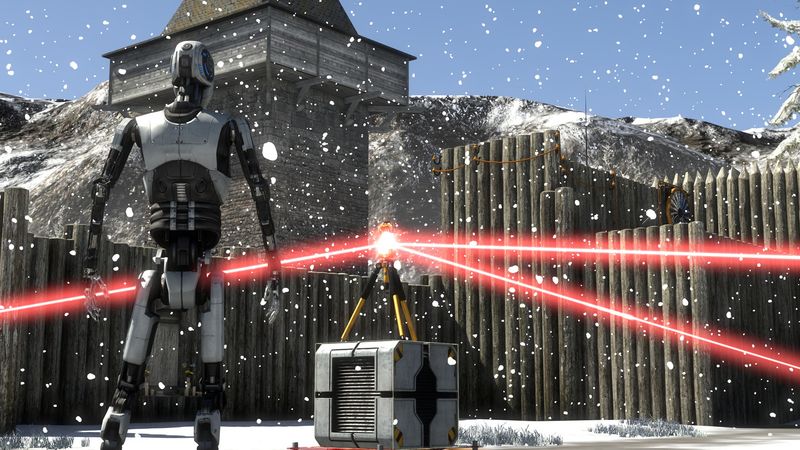
 Voice acting in The Talos Principle shows up only via logs. This minimalism helps keep the focus on puzzles. Rather than cutscenes, the story unfolds at your pace. That decision enhances immersion and introspection. I often reread logs to unpack hidden meaning. Furthermore, Elohim’s voice stands out more because it’s used sparingly. The silence creates space for reflection. When Elohim speaks, it matters. Overall, the restrained voice work fits the philosophical tone. It’s just you, the puzzles, and the questions—and that’s exactly how it should feel.
Voice acting in The Talos Principle shows up only via logs. This minimalism helps keep the focus on puzzles. Rather than cutscenes, the story unfolds at your pace. That decision enhances immersion and introspection. I often reread logs to unpack hidden meaning. Furthermore, Elohim’s voice stands out more because it’s used sparingly. The silence creates space for reflection. When Elohim speaks, it matters. Overall, the restrained voice work fits the philosophical tone. It’s just you, the puzzles, and the questions—and that’s exactly how it should feel.
 I mute jump sounds sometimes. Instead, I focus on timer beeps, which are more useful during speedruns. These beeps guide my rhythm for jumps and item use. By silencing less helpful sounds, I highlight what’s essential for timing. In multi-stage puzzles, every second matters. As a result, this adjustment helps me stay locked in. It’s a small change, but it sharpens awareness. Even during practice runs, these audio tweaks support focus. It’s all about customizing for precision and performance.
I mute jump sounds sometimes. Instead, I focus on timer beeps, which are more useful during speedruns. These beeps guide my rhythm for jumps and item use. By silencing less helpful sounds, I highlight what’s essential for timing. In multi-stage puzzles, every second matters. As a result, this adjustment helps me stay locked in. It’s a small change, but it sharpens awareness. Even during practice runs, these audio tweaks support focus. It’s all about customizing for precision and performance.
 On characters, Elohim stands out as a unique guide. It questions your faith, identity, and obedience. Importantly, it has no face—just a booming voice. That mystery makes it feel godlike and unsettling. With no form, players project meaning onto its words. Every interaction with Elohim feels weighty. Moreover, it shapes the entire journey’s tone. Rather than acting like a narrator, it’s a philosophical force. This minimal design choice adds depth. It makes you reflect more than react, which elevates the experience dramatically.
On characters, Elohim stands out as a unique guide. It questions your faith, identity, and obedience. Importantly, it has no face—just a booming voice. That mystery makes it feel godlike and unsettling. With no form, players project meaning onto its words. Every interaction with Elohim feels weighty. Moreover, it shapes the entire journey’s tone. Rather than acting like a narrator, it’s a philosophical force. This minimal design choice adds depth. It makes you reflect more than react, which elevates the experience dramatically.
 The lack of human faces fits the theme of isolation. You play as a lone robot among ruins of long-lost civilizations. Instead of characters, there are only logs and terminals. That silence reinforces the story’s existential focus. Most puzzle games offer guidance; this one offers space for thought. It’s a powerful contrast. By removing human presence, the game sharpens its introspective atmosphere. You’re left to contemplate identity, meaning, and solitude—all while solving logic puzzles. It’s a rare, deeply immersive approach that works beautifully.
The lack of human faces fits the theme of isolation. You play as a lone robot among ruins of long-lost civilizations. Instead of characters, there are only logs and terminals. That silence reinforces the story’s existential focus. Most puzzle games offer guidance; this one offers space for thought. It’s a powerful contrast. By removing human presence, the game sharpens its introspective atmosphere. You’re left to contemplate identity, meaning, and solitude—all while solving logic puzzles. It’s a rare, deeply immersive approach that works beautifully.
 I call Elohim “Big Voice” in my runs. It motivates me to keep going. Although I visit extra logs only once per run, Elohim’s voice serves as a milestone marker. It frames chapters and signals major progress points. Even during fast runs, its presence feels like a checkpoint I can sense. Surprisingly, I rely more on that voice than any HUD element. This minimalist design keeps immersion strong. When every second counts, Elohim adds structure without cluttering the screen or flow.
I call Elohim “Big Voice” in my runs. It motivates me to keep going. Although I visit extra logs only once per run, Elohim’s voice serves as a milestone marker. It frames chapters and signals major progress points. Even during fast runs, its presence feels like a checkpoint I can sense. Surprisingly, I rely more on that voice than any HUD element. This minimalist design keeps immersion strong. When every second counts, Elohim adds structure without cluttering the screen or flow.
 The challenges range from easy to gruelling. Early puzzles introduce tools and logic gently. Later ones ramp up with layered mechanics. While a few drag slightly, the overall pacing feels fair. Crucially, you can reset puzzles instantly, removing frustration and promoting experimentation. Some areas offer a breather, while others really push your mind. That ebb and flow respects your learning curve. Instead of handholding, the game teaches through doing. By the final tower, I felt challenged—but never unprepared.
The challenges range from easy to gruelling. Early puzzles introduce tools and logic gently. Later ones ramp up with layered mechanics. While a few drag slightly, the overall pacing feels fair. Crucially, you can reset puzzles instantly, removing frustration and promoting experimentation. Some areas offer a breather, while others really push your mind. That ebb and flow respects your learning curve. Instead of handholding, the game teaches through doing. By the final tower, I felt challenged—but never unprepared.
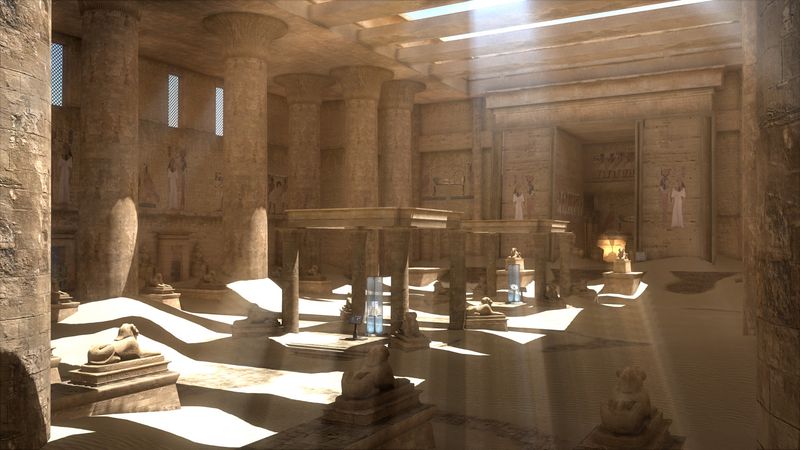
 I saw difficulty spikes near late puzzles. When stuck, I swapped zones to reset mentally. That flexibility helped avoid burnout. It’s an excellent accessibility feature—there’s no forced path. You can progress your own way and build confidence naturally. By the time complex puzzles appear, you’ve already mastered key tools. That progression rewards persistence. Because you’re never cornered, frustration stays low. Instead, motivation remains high. This adaptive difficulty is why I never gave up. The design supports resilience and experimentation.
I saw difficulty spikes near late puzzles. When stuck, I swapped zones to reset mentally. That flexibility helped avoid burnout. It’s an excellent accessibility feature—there’s no forced path. You can progress your own way and build confidence naturally. By the time complex puzzles appear, you’ve already mastered key tools. That progression rewards persistence. Because you’re never cornered, frustration stays low. Instead, motivation remains high. This adaptive difficulty is why I never gave up. The design supports resilience and experimentation.
 The tools scale nicely in The Talos Principle. Each new mechanic adds depth without overwhelming you. Even the hardest puzzles feel fair once cracked. I even made a tier list just for fun. The tool progression respects player growth. You’re never dropped into the deep end unprepared. As a result, every solve feels earned. The gradual layering avoids burnout while keeping curiosity strong. By the time things get tough, your mindset is ready. That’s why it works—it teaches while challenging you.
The tools scale nicely in The Talos Principle. Each new mechanic adds depth without overwhelming you. Even the hardest puzzles feel fair once cracked. I even made a tier list just for fun. The tool progression respects player growth. You’re never dropped into the deep end unprepared. As a result, every solve feels earned. The gradual layering avoids burnout while keeping curiosity strong. By the time things get tough, your mindset is ready. That’s why it works—it teaches while challenging you.
 I skip side sigils during runs, focusing on the main star path. The final tower holds the toughest puzzles—long, multi-step gauntlets. But they feel climactic and well-earned. Even when slowed down, I didn’t mind. There’s grandeur in those final sequences. Side puzzles are great for practice, but I stay on the main line during runs. That focus increases pressure, but it’s exciting. These late challenges test everything you’ve learned. They’re the culmination of your journey—and they deliver a truly satisfying conclusion to the experience.
I skip side sigils during runs, focusing on the main star path. The final tower holds the toughest puzzles—long, multi-step gauntlets. But they feel climactic and well-earned. Even when slowed down, I didn’t mind. There’s grandeur in those final sequences. Side puzzles are great for practice, but I stay on the main line during runs. That focus increases pressure, but it’s exciting. These late challenges test everything you’ve learned. They’re the culmination of your journey—and they deliver a truly satisfying conclusion to the experience.
 Replay value in The Talos Principle is high. I return often to test theories, find stars, and refine routes. Each run reveals new secrets or smarter approaches. With 180 hidden stars, there’s always more to uncover. Even familiar zones feel new when you experiment. I tweak strategies and question assumptions. The open structure allows endless exploration. Every revisit brings fresh insights. That’s rare. For me, it’s the sign of a timeless game—one that keeps growing with the player, run after run.
Replay value in The Talos Principle is high. I return often to test theories, find stars, and refine routes. Each run reveals new secrets or smarter approaches. With 180 hidden stars, there’s always more to uncover. Even familiar zones feel new when you experiment. I tweak strategies and question assumptions. The open structure allows endless exploration. Every revisit brings fresh insights. That’s rare. For me, it’s the sign of a timeless game—one that keeps growing with the player, run after run.
 I replay The Talos Principle to try different routes. I follow new log threads or tablet paths in alternate orders. Changing puzzle sequences keeps things fresh. Sometimes, I even forget the main goal—I’m so deep into discovery. That’s what makes it great. It rewards curiosity and exploration. Even small shifts in approach lead to big revelations. This flexibility keeps interest evergreen. Whether I’m theorycrafting or casually wandering, I always leave with something new. It’s a puzzle game that grows with your imagination.
I replay The Talos Principle to try different routes. I follow new log threads or tablet paths in alternate orders. Changing puzzle sequences keeps things fresh. Sometimes, I even forget the main goal—I’m so deep into discovery. That’s what makes it great. It rewards curiosity and exploration. Even small shifts in approach lead to big revelations. This flexibility keeps interest evergreen. Whether I’m theorycrafting or casually wandering, I always leave with something new. It’s a puzzle game that grows with your imagination.
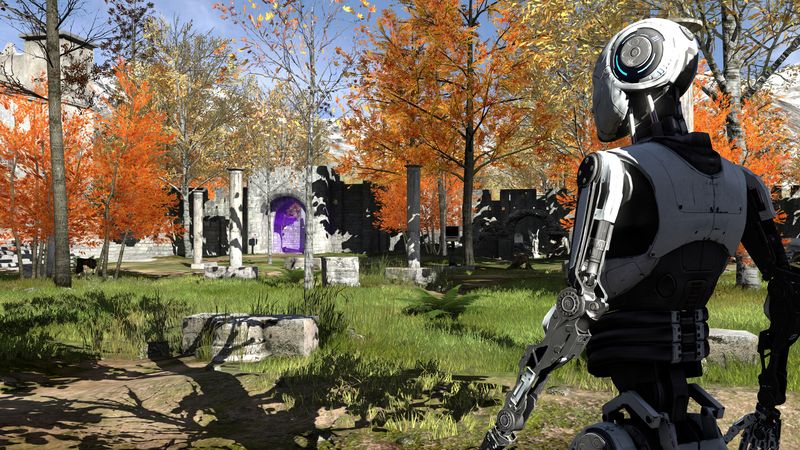
 I revisit puzzles to polish times and refine techniques. Meanwhile, the Talos community keeps discovering new tricks. I join Twitch chats, hop into Discord threads, and regularly swap strategies. Together, we analyze routes and debate star placements. Daily practice pushes my times lower. Plus, I contribute some skips of my own. This ongoing conversation keeps the game vibrant. You’re not just playing—you’re collaborating. Each run builds on shared knowledge. In the end, that communal pursuit of mastery makes Talos more than gameplay—it becomes creative, cooperative problem-solving at its best.
I revisit puzzles to polish times and refine techniques. Meanwhile, the Talos community keeps discovering new tricks. I join Twitch chats, hop into Discord threads, and regularly swap strategies. Together, we analyze routes and debate star placements. Daily practice pushes my times lower. Plus, I contribute some skips of my own. This ongoing conversation keeps the game vibrant. You’re not just playing—you’re collaborating. Each run builds on shared knowledge. In the end, that communal pursuit of mastery makes Talos more than gameplay—it becomes creative, cooperative problem-solving at its best.
 The Talos Principle stands out in puzzle history. Croteam fused rich lore with brilliant mechanics to create something special. Each challenge fits within a thoughtful, philosophical framework. While few puzzle games achieve this kind of harmony, Talos does—with clarity and grace. It invites deep exploration and encourages critical thinking. If you value puzzles with substance, it’s a must-play. Best of all, the final moments linger. They offer both closure and introspection. Ultimately, this is a game that respects your mind—and gently nudges your soul.
The Talos Principle stands out in puzzle history. Croteam fused rich lore with brilliant mechanics to create something special. Each challenge fits within a thoughtful, philosophical framework. While few puzzle games achieve this kind of harmony, Talos does—with clarity and grace. It invites deep exploration and encourages critical thinking. If you value puzzles with substance, it’s a must-play. Best of all, the final moments linger. They offer both closure and introspection. Ultimately, this is a game that respects your mind—and gently nudges your soul.
 This game shines for open exploration within puzzles. Right from the start, it encourages free thinking and deep engagement. Even after several playthroughs, it remains fresh—a rarity in the genre. I never tire of revisiting its temples and ruins. Each one feels like a mental and emotional landmark. Moreover, the balance between structure and freedom elevates the whole experience. You’re not pushed—you’re invited to question, wander, and experiment. That subtle freedom makes the game evergreen. It’s more than solving puzzles—it’s discovering something within yourself.
This game shines for open exploration within puzzles. Right from the start, it encourages free thinking and deep engagement. Even after several playthroughs, it remains fresh—a rarity in the genre. I never tire of revisiting its temples and ruins. Each one feels like a mental and emotional landmark. Moreover, the balance between structure and freedom elevates the whole experience. You’re not pushed—you’re invited to question, wander, and experiment. That subtle freedom makes the game evergreen. It’s more than solving puzzles—it’s discovering something within yourself.
 The Talos Principle sets a high bar for design and tools. It inspires players who love planning, strategy, and discovery. Here, tools are more than gadgets—they’re concepts brought to life. Each mechanic unfolds with time and meaning. The design invites mastery and rewards understanding. Best of all, the devs clearly respect their audience. You feel it in every zone. Ultimately, this isn’t just another puzzle game. It’s a statement on interactive storytelling and how curiosity can drive deeper learning through thoughtful play.
The Talos Principle sets a high bar for design and tools. It inspires players who love planning, strategy, and discovery. Here, tools are more than gadgets—they’re concepts brought to life. Each mechanic unfolds with time and meaning. The design invites mastery and rewards understanding. Best of all, the devs clearly respect their audience. You feel it in every zone. Ultimately, this isn’t just another puzzle game. It’s a statement on interactive storytelling and how curiosity can drive deeper learning through thoughtful play.
 It works as a serious speedrun challenge too. In that mode, every second matters. The Talos Principle hits all the marks—tight movement, fair systems, and deep strategy. I can test new routes or push for faster clears. The satisfaction of shaving seconds never fades. Its stability makes practice worthwhile. Whether chasing records or refining clean runs, it’s always rewarding. Above all, it respects both skill and thought. That rare mix of competitiveness and philosophy keeps me coming back for more.
It works as a serious speedrun challenge too. In that mode, every second matters. The Talos Principle hits all the marks—tight movement, fair systems, and deep strategy. I can test new routes or push for faster clears. The satisfaction of shaving seconds never fades. Its stability makes practice worthwhile. Whether chasing records or refining clean runs, it’s always rewarding. Above all, it respects both skill and thought. That rare mix of competitiveness and philosophy keeps me coming back for more.
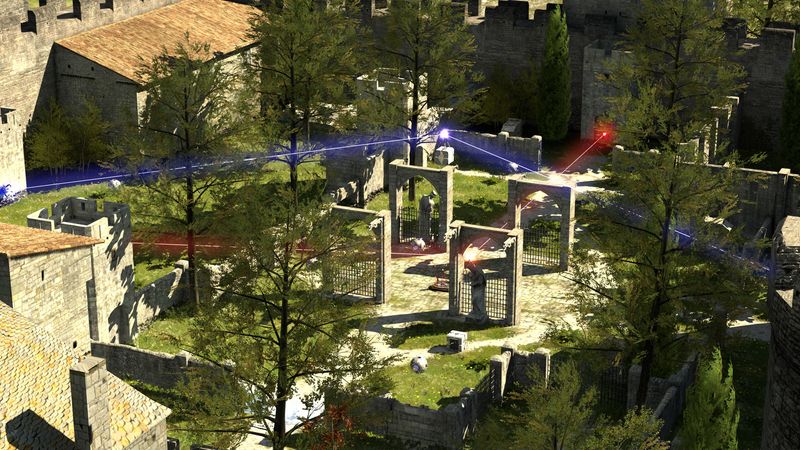
 Looking for puzzle games that challenge your mind and spark creativity? Try The Witness for open-world line puzzles and natural discovery. Portal 2 offers physics mechanics and rich co-op content. Antichamber twists logic with warped geometry. The Swapper explores identity with clever cloning. The Turing Test blends ethics and puzzles in a strong story. These titles push design forward. Whether you value abstract thinking, rich narrative, or surreal twists, they’re must-plays—and they pair beautifully with The Talos Principle’s cerebral experience.
Looking for puzzle games that challenge your mind and spark creativity? Try The Witness for open-world line puzzles and natural discovery. Portal 2 offers physics mechanics and rich co-op content. Antichamber twists logic with warped geometry. The Swapper explores identity with clever cloning. The Turing Test blends ethics and puzzles in a strong story. These titles push design forward. Whether you value abstract thinking, rich narrative, or surreal twists, they’re must-plays—and they pair beautifully with The Talos Principle’s cerebral experience.

